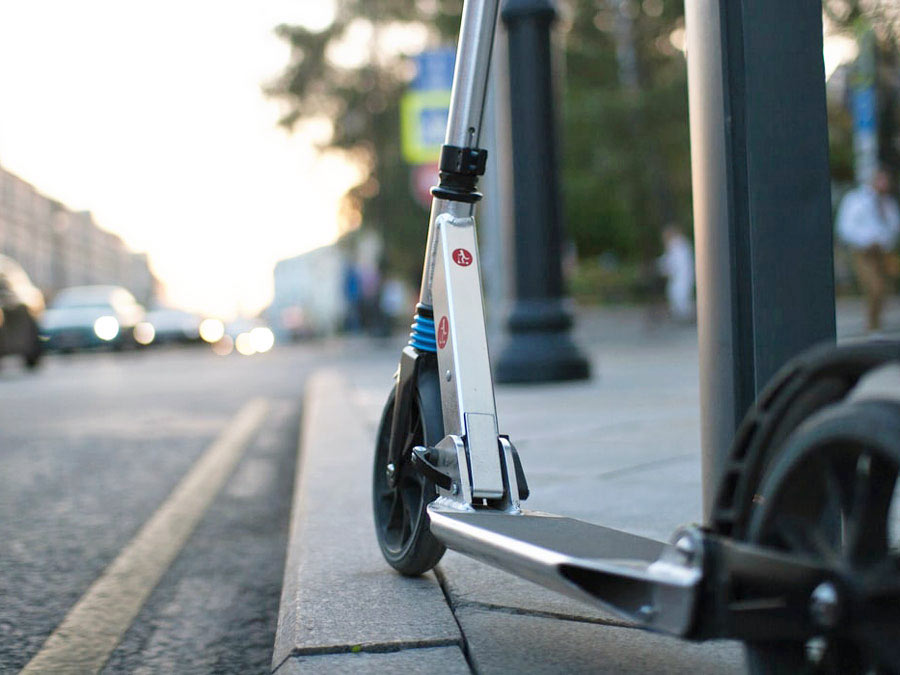People, planet, prosperity: Working together towards a sustainable future
Innovation Issue 35: Fall 2021
Powering sustainable transportation through regulatory change

Powering sustainable transportation through regulatory change
E-bikes could help power a more sustainable transportation network in Toronto, but there are barriers to clear before government and other influential officials are comfortable and capable of paving a path towards more widespread use.
Barriers to adoption include safety issues, clear categorization of different electric mobility devices, infrastructure considerations and regulatory issues, as found in a study by Ryerson geography professor Sara Edge, professor Jennifer Dean from the University of Waterloo and Ryerson graduate Joshua Goodfield.
“It’s a perfect example of technology evolving faster than our policy can keep up. Governance stakeholders have to learn how to adapt on the fly, but infrastructure is not easy to change,” said professor Edge. “As we shift towards more sustainable technologies, there’s an inherent amount of experimentation that has to happen.”
As part of a larger, multidisciplinary collaborative project, researchers interviewed a range of governmental and non-governmental stakeholders with influence over transportation decision-making about their attitudes towards e-bikes. Examples of interviewees include planners, elected officials, municipal and provincial transportation managers and law enforcement.
Professors Edge and Dean, both health geographers researching the interaction between people and the environment, had teamed up previously with University of Waterloo computer science professor Srinivasan Keshav to examine e-bikes from both a technological perspective and a human and social angle. For this particular study, professor Edge and her colleagues interviewed influential transportation officials who could help pave the way for change through actions like regulatory adjustments or support for innovative projects.
There is a large potential for e-bikes to help fill gaps in emerging multi-modal transportation systems, such as biking from home to subway or transit hubs, says professor Edge. E-bikes are an appealing form of sustainable transportation, offering an eco-friendly but less physically demanding alternative to traditional cycling while being cheaper than buying a car. But the researchers’ interviews with governance stakeholders showed that there are a range of considerations which need to be addressed before many of the officials will feel comfortable supporting changes that could help increase e-bike use in Toronto.
One of the primary issues is distinguishing between the different kinds of e-bikes. There are pedelecs, which are electrified pedal bikes, and then there are electrified motorcycle-style e-bikes, which are much bigger and heavier. There are also e-scooters, including motorized scooters and kick-style scooters – and the issue of whether or not they should be considered separately or in concert with e-bikes. Toronto’s city council recently opted out of an e-scooter pilot, effectively banning them from the city’s streets. Professor Edge says that this decision could potentially impede industry investment in infrastructure to facilitate e-mobility adoption.

Infrastructure – and who pays for it – is another key consideration for policy-makers, she says. Who should pay to build any infrastructure needed to encourage more people to ride e-bikes: the municipal government, the provincial government, industry? Infrastructure requirements also play into safety considerations, another crucial area. Professor Edge notes that as some e-bikes are bigger and heavier than non-powered bikes, there are questions about whether they should be allowed in regular bike lanes, or how to encourage their use without increasing collisions. Decision-makers flagged the need for more data, she says. Now, when a bike is part of a collision, enforcement officers will note what kind of bike was involved.
Some of the other issues flagged during research interviews include questions of how to integrate e-bikes into Toronto’s existing transportation system as well as if e-bikes should be allowed on transit, especially during peak times, and what the rules might be. Overall, the researchers found the incorporation of e-bikes into bike share programs is a promising path to increase adoption, as is the niche tourist market.
The researchers suggest that efforts are needed to provide clarity for citizens and law enforcement about which types of e-bikes are allowed and where. They also recommend that in the context of Toronto’s congested core, there should be restrictions on moped-style e-scooters and cars on transit-hub-connected streets and major crosstown roads, a move they say will encourage more use of the pedelec-style e-bikes by offering more room to navigate around other road users, including pedestrians. The stakeholders they interviewed generally saw e-bikes as advantageous to encouraging transitions to more sustainable transportation systems.
The study was published in Environmental Innovation and Societal Transitions. (external link)

It’s a perfect example of technology evolving faster than our policy can keep up. Governance stakeholders have to learn how to adapt on the fly, but infrastructure is not easy to change.

This research was supported by a Social Sciences and Humanities Research Council of Canada Institutional grant through Ryerson.
